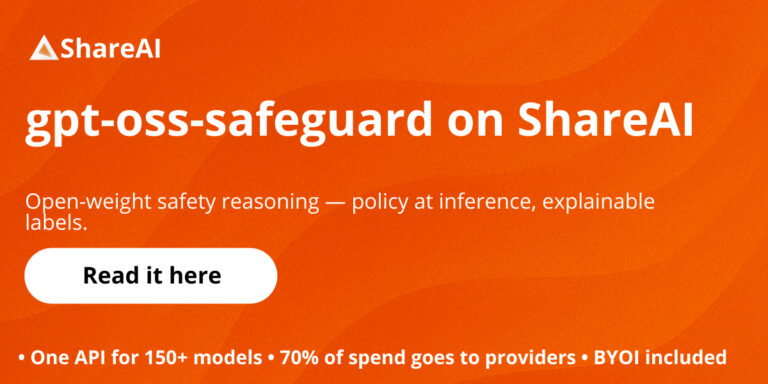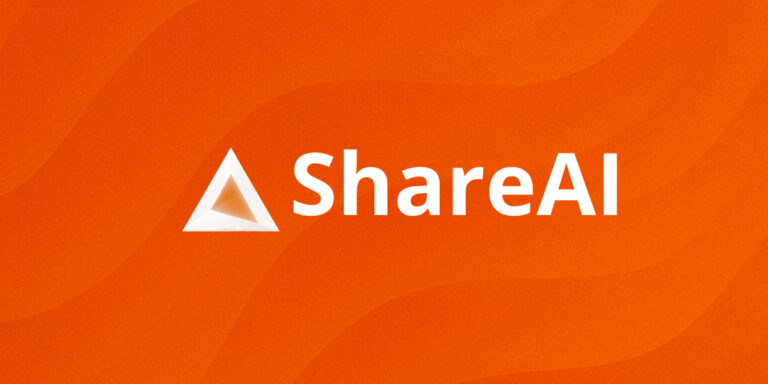Gloo AI Gateway Alternatives 2025: Top 10 Gloo alternatives

Updated November 2025
If you’re evaluating Gloo AI Gateway alternatives, this builder-first guide clarifies what Gloo AI Gateway (and the broader Agentgateway Enterprise) actually is—an egress governance layer with centralized credentials, policy, and observability—then compares the 10 best alternatives. We place ShareAI first for teams that want one API across many providers, a transparent marketplace with price/latency/uptime/availability before routing, instant failover, and people-powered economics (70% of spend flows to providers).
What Gloo AI Gateway is (and isn’t)
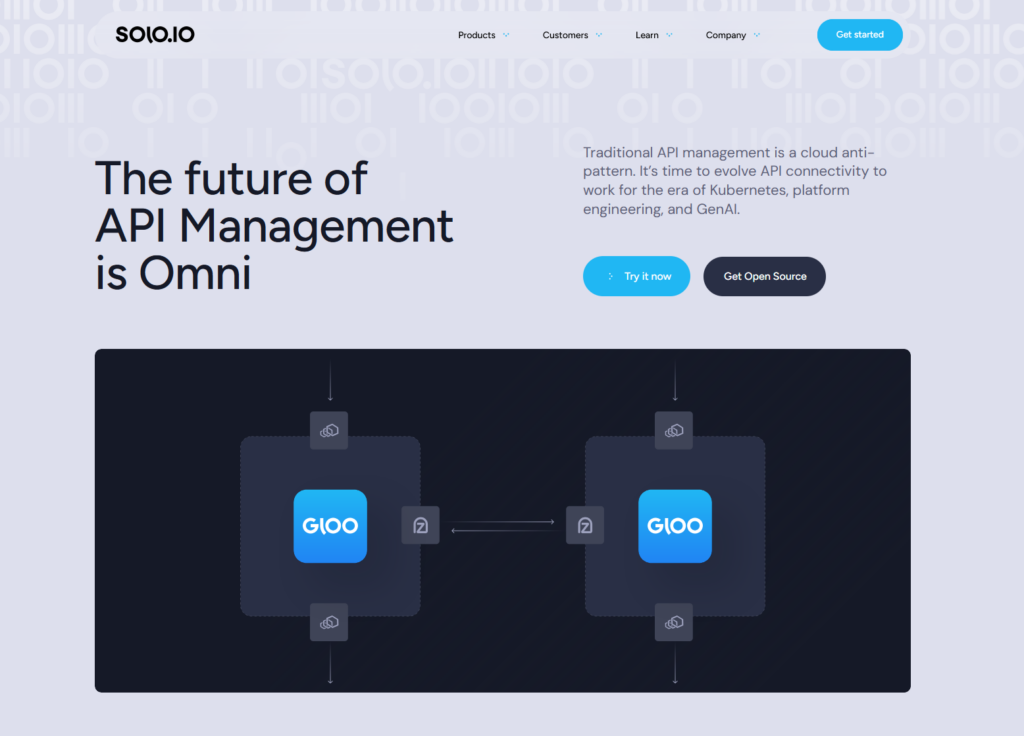
Gloo AI Gateway extends Gloo’s Envoy-based API gateway with AI-specific governance: store provider keys centrally, enforce policies (quotas, guardrails), and export metrics/traces so AI usage is auditable. Agentgateway Enterprise pushes further into agent connectivity (A2A/MCP), adding security and telemetry for how agents discover and use tools. This is infrastructure and policy, not a transparent model marketplace.
TL;DR: Gloo AI Gateway is about control and visibility at the edge. It’s great if you already run Gloo and want enterprise policy + observability for LLM traffic. If you need pre-route transparency and resilient multi-provider routing, that’s where an aggregator like ShareAI leads.
Aggregators vs. Gateways vs. Agent platforms
- LLM aggregators (e.g., ShareAI, OpenRouter, Eden AI) give you one API across many providers with pre-route data (price, latency, uptime, availability, provider type) and smart routing/failover.
- AI gateways (e.g., Gloo, Kong AI Gateway, Portkey) centralize keys, policies, and observability. You bring your providers. These are governance tools, not marketplaces.
- Agent & orchestration platforms (e.g., Orq, Unify) focus on evaluation, flows, tool wiring, and runtime behaviors; less on marketplace-grade routing economics.
How we evaluated the best Gloo AI Gateway alternatives
- Model breadth & neutrality: Proprietary + open; swap providers without rewrites.
- Latency & resilience: Routing policies, timeouts/retries, instant failover.
- Governance & security: Key handling, scopes/quotas, regional routing, guardrails.
- Observability: Logs/traces plus cost/latency dashboards.
- Pricing transparency & TCO: Compare real costs before you route.
- Developer experience: Docs, SDKs, quickstarts; time-to-first-token.
- Community & economics: Does your spend grow supply (incentives for GPU owners)?
Top 10 Gloo AI Gateway alternatives
#1 — ShareAI (People-Powered AI API)
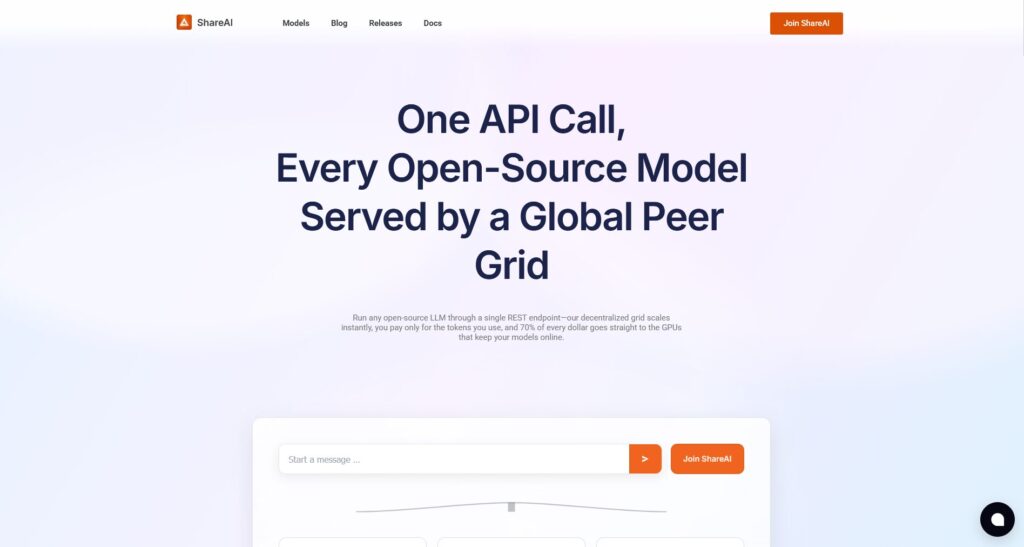
What it is. A multi-provider API with a transparent marketplace and smart routing. With one integration, browse a large catalog of models/providers, compare price, latency, uptime, availability, provider type, and route with instant failover. Economics are people-powered: 70% of every dollar flows to providers (community or company) that keep models online.
Why it’s #1 here. If you want provider-agnostic aggregation with pre-route transparency and resilience, ShareAI is the most direct fit. Keep a gateway if you need org-wide policies; add ShareAI for marketplace-guided routing.
- One API → 150+ models across many providers; no rewrites, no lock-in.
- Transparent marketplace: choose by price, latency, uptime, availability, provider type.
- Resilience by default: routing policies + instant failover.
- Fair economics: 70% of spend goes to providers (community or company).
Quick links
For providers: earn by keeping models online
Anyone can become a ShareAI provider—Community or Company. Onboard via Windows, Ubuntu, macOS, or Docker. Contribute idle-time bursts or run always-on. Choose your incentive: Rewards (money), Exchange (tokens/AI Prosumer), or Mission (donate a % to NGOs). As you scale, you can set your own inference prices and gain preferential exposure. Provider Guide
#2 — Kong AI Gateway
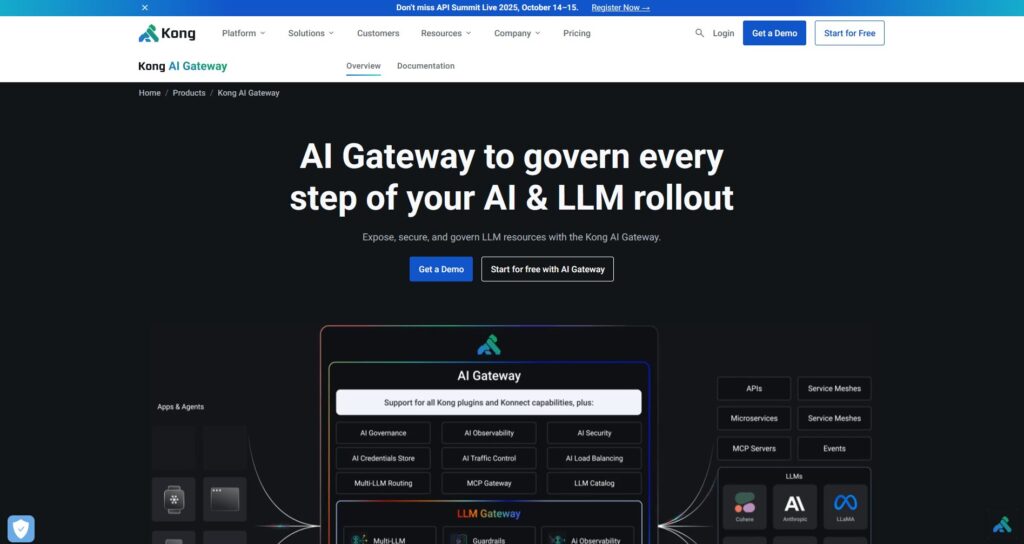
What it is. Enterprise AI/LLM gateway—policies, plugins, analytics, observability for AI traffic at the edge. It’s a control plane, not a marketplace.
Good fit for: Enterprises already on Kong that want centralized governance for LLM egress, with plugin-driven extensibility.
#3 — Portkey
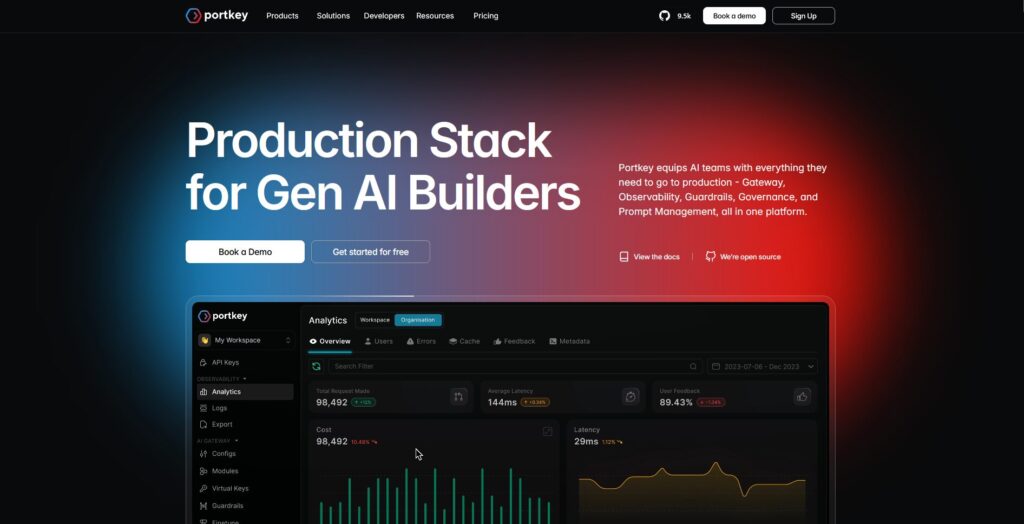
What it is. An AI gateway emphasizing guardrails, governance, and deep observability (popular in regulated industries).
Good fit for: Security-conscious orgs needing granular redaction/masking, strong auditability, and policy ergonomics.
#4 — OpenRouter
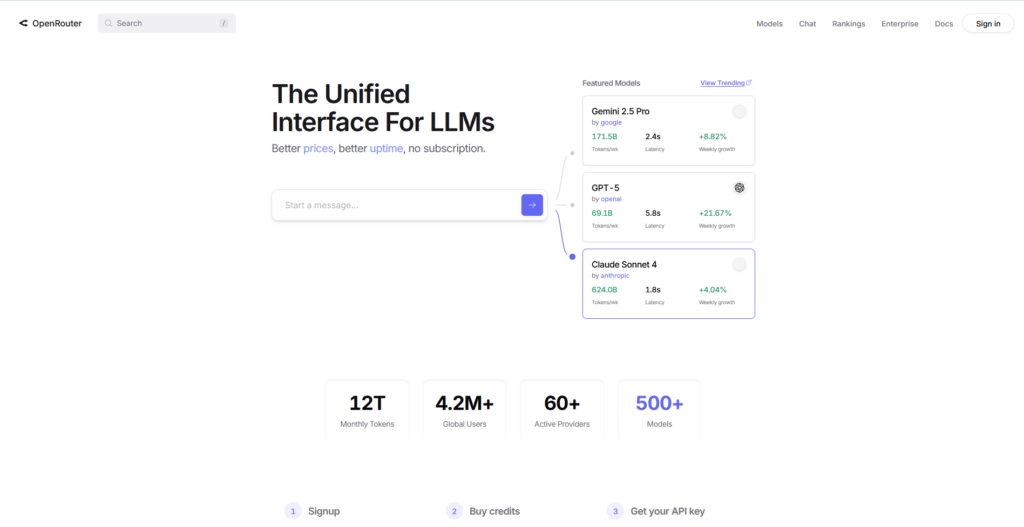
What it is. A unified API across many models/providers; strong for fast experimentation on a wide catalog.
Good fit for: Teams prototyping across many LLMs quickly; less emphasis on enterprise governance.
#5 — Eden AI
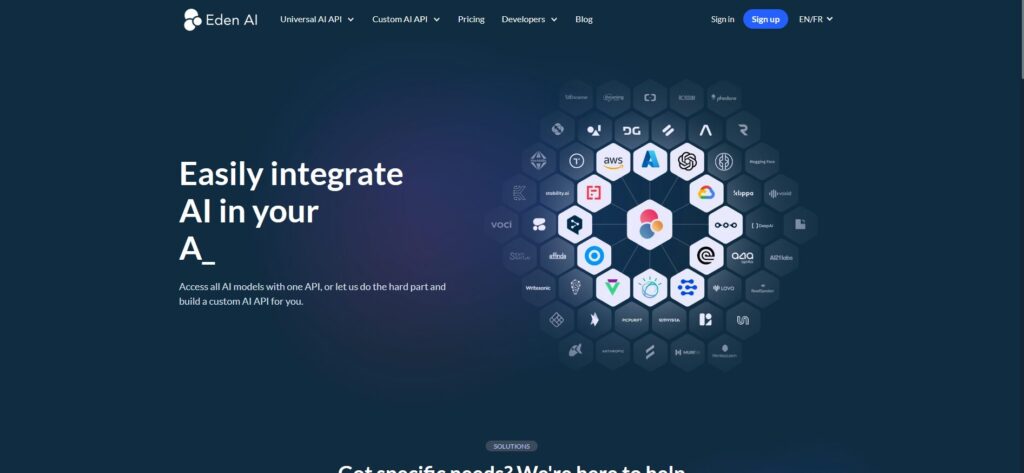
What it is. An aggregator for LLMs + other AI services (vision, TTS, translation), with fallbacks/caching and task batching.
Good fit for: Multi-modal use cases that want a single surface beyond just LLMs.
#6 — LiteLLM
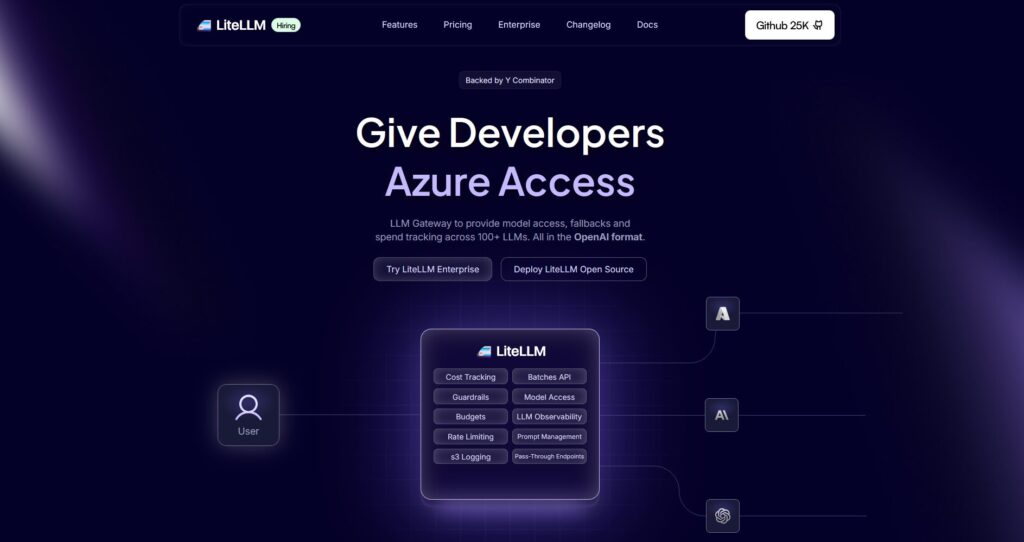
What it is. A lightweight Python SDK + self-hostable proxy speaking an OpenAI-compatible interface to many providers.
Good fit for: DIY-leaning teams that prefer to operate their own proxy layer and wire policies in infra.
#7 — Unify

What it is. Quality-oriented routing and evaluation to pick better models per prompt.
Good fit for: Teams optimizing outputs via evals and model selection experiments.
#8 — Orq AI

What it is. Orchestration/collaboration platform that connects tools, memory, and flows to move from experiments to production.
Good fit for: Builder teams wanting low-code orchestration and visibility across flows.
#9 — Apigee (fronting LLMs)
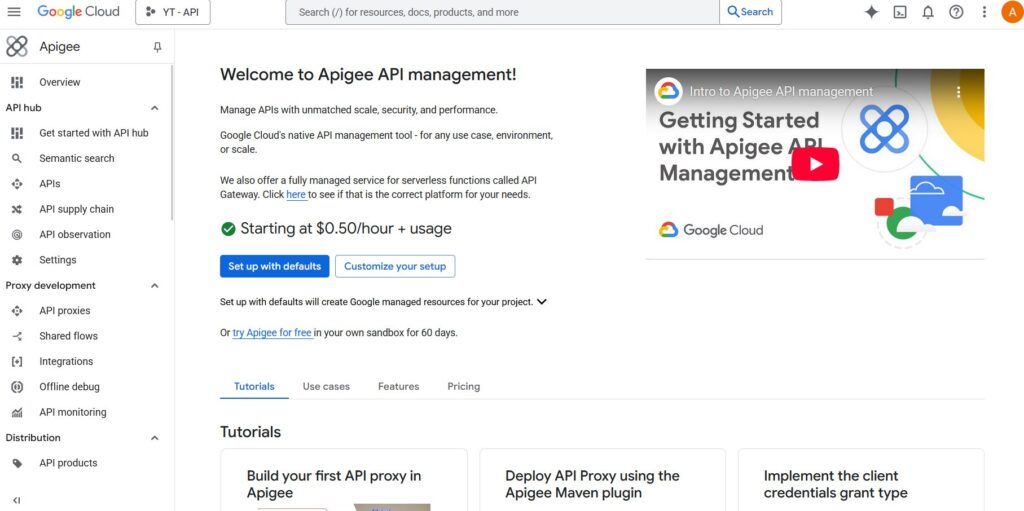
What it is. A mature API management platform you can place in front of LLM providers to apply policies, keys, and quotas.
Good fit for: Enterprises standardizing on Apigee and layering AI traffic into the same governance plane.
#10 — NGINX

What it is. The DIY route: build policies, token enforcement, and caching for LLM backends with NGINX.
Good fit for: Shops that want maximum control and are comfortable writing custom filters.
Gloo AI Gateway vs ShareAI
If you need one API over many providers with transparent pricing/latency/uptime/availability and instant failover, choose ShareAI.
If your top requirement is egress governance—centralized credentials, policy enforcement, and OpenTelemetry-friendly observability—Gloo AI Gateway fits that lane. Many teams pair them: gateway for org policy + ShareAI for marketplace routing.
Quick comparison
| Platform | Who it serves | Model breadth | Governance & security | Observability | Routing / failover | Marketplace transparency | Provider program |
|---|---|---|---|---|---|---|---|
| ShareAI | Teams needing one API + fair economics | 150+ models across many providers | API keys & per-route controls | Console usage + marketplace stats | Smart routing + instant failover | Yes (price, latency, uptime, availability, provider type) | Yes — open supply; 70% to providers |
| Gloo AI Gateway | Teams wanting egress governance | BYO providers | Centralized credentials, guardrails, quotas | OTel metrics & tracing | Conditional routing/policies | No (infra tool, not a marketplace) | n/a |
| Kong AI Gateway | Enterprises needing gateway-level policy | BYO | Strong edge policies/plugins | Analytics | Proxy/plugins, retries | No (infra) | n/a |
| Portkey | Regulated/enterprise teams | Broad | Guardrails & governance | Deep traces | Conditional routing | Partial | n/a |
| OpenRouter | Devs wanting fast multi-model access | Wide catalog | Basic API controls | App-side | Fallbacks | Partial | n/a |
| Eden AI | Teams needing LLM + other AI APIs | Broad | Standard controls | Varies | Fallbacks/caching | Partial | n/a |
| LiteLLM | DIY/self-host proxy | Many providers | Config/key limits | Your infra | Retries/fallback | n/a | n/a |
| Unify | Quality-driven teams | Multi-model | Standard API security | Platform analytics | Best-model selection | n/a | n/a |
| Orq | Orchestration-first teams | Wide support | Platform controls | Platform analytics | Orchestration flows | n/a | n/a |
| Apigee / NGINX | Enterprises / DIY | BYO | Policies | Add-ons/custom | Custom | n/a | n/a |
Pricing & TCO: compare real costs (not just unit prices)
Raw $/1K tokens hides the real picture. TCO shifts with retries/fallbacks, latency (affects time-to-first-token and user behavior), provider variance, observability storage, and evaluation runs. A transparent marketplace helps you pick routes that balance cost and UX.
TCO ≈ Σ (Base_tokens × Unit_price × (1 + Retry_rate))
+ Observability_storage
+ Evaluation_tokens
+ Egress
Prototype (~10k tokens/day): Optimize for time-to-first-token (try the Playground for sample traffic and prompts).
Mid-scale (~2M tokens/day): Marketplace-guided routing/failover often trims 10–20% while improving perceived responsiveness.
Spiky workloads: Expect higher effective token costs from retries during failover; budget for it and use backpressure on the gateway side.
Migration patterns: moving to ShareAI
From Gloo AI Gateway / Agentgateway
Keep gateway-level policies where they shine, add ShareAI for marketplace routing + instant failover. Common pattern: gateway auth/policy → ShareAI route per model → measure marketplace stats → tighten policies.
From OpenRouter
Map model names and verify prompt parity. Shadow 10% of traffic, then ramp 25% → 50% → 100% as latency/error budgets hold. Marketplace data makes provider swaps straightforward.
From LiteLLM
Replace the self-hosted proxy on production routes you don’t want to operate; keep LiteLLM for dev if desired. Compare ops overhead vs. managed routing benefits.
From Unify / Portkey / Orq / Kong
Define feature-parity expectations (analytics, guardrails, orchestration, plugins). Many teams run hybrid: keep specialized features where they’re strongest; use ShareAI for transparent provider choice and failover.
Developer quickstart (copy-paste)
These examples use an OpenAI-compatible surface. Replace YOUR_KEY with your ShareAI key — create one via Sign in:
https://console.shareai.now/?login=true&type=login
#!/usr/bin/env bash
# cURL — Chat Completions
# Prereqs:
# export SHAREAI_API_KEY="YOUR_KEY"
curl -X POST "https://api.shareai.now/v1/chat/completions" \
-H "Authorization: Bearer $SHAREAI_API_KEY" \
-H "Content-Type: application/json" \
-d '{
"model": "llama-3.1-70b",
"messages": [
{ "role": "user", "content": "Give me a short haiku about reliable routing." }
],
"temperature": 0.4,
"max_tokens": 128
}'
// JavaScript (fetch) — Node 18+/Edge runtimes
// Prereqs:
// process.env.SHAREAI_API_KEY = "YOUR_KEY"
async function main() {
const res = await fetch("https://api.shareai.now/v1/chat/completions", {
method: "POST",
headers: {
"Authorization": `Bearer ${process.env.SHAREAI_API_KEY}`,
"Content-Type": "application/json"
},
body: JSON.stringify({
model: "llama-3.1-70b",
messages: [
{ role: "user", content: "Give me a short haiku about reliable routing." }
],
temperature: 0.4,
max_tokens: 128
})
});
if (!res.ok) {
console.error("Request failed:", res.status, await res.text());
return;
}
const data = await res.json();
console.log(JSON.stringify(data, null, 2));
}
main().catch(console.error);
Security, privacy & compliance checklist (vendor-agnostic)
- Key handling: rotation cadence; minimal scopes; environment separation.
- Data retention: where prompts/responses are stored and for how long; redaction defaults.
- PII & sensitive content: masking; access controls; regional routing for data locality.
- Observability: prompt/response logging; filter or pseudonymize; propagate trace IDs consistently (OTel).
- Incident response: escalation paths and provider SLAs.
FAQ — Gloo AI Gateway vs other competitors
Gloo AI Gateway vs ShareAI — which for multi-provider routing?
ShareAI. It’s built for marketplace transparency (price, latency, uptime, availability, provider type) and smart routing/failover across many providers. Gloo AI Gateway is an egress governance tool (centralized credentials/policy; OTel-friendly observability; AI middlewares). Many teams use both.
Gloo AI Gateway vs Portkey — who’s stronger on guardrails?
Both emphasize governance/observability. Depth and ergonomics differ. If your main need is transparent provider choice and instant failover, add ShareAI.
Gloo AI Gateway vs OpenRouter — quick multi-model access or gateway controls?
OpenRouter makes multi-model access quick; Gloo centralizes policy and observability. For pre-route transparency and resilient routing, ShareAI combines multi-provider access with a marketplace view and failover.
Gloo AI Gateway vs Eden AI — many AI services or egress control?
Eden AI aggregates multiple AI services (LLM, image, TTS). Gloo centralizes policy/credentials with AI middlewares. For transparent pricing/latency across many LLM providers and instant failover, choose ShareAI.
Gloo AI Gateway vs LiteLLM — self-host proxy or managed governance?
LiteLLM is a DIY proxy you operate; Gloo is managed governance/observability for AI egress. If you’d rather not run a proxy and want marketplace-driven routing, choose ShareAI.
Gloo AI Gateway vs Unify — best-model selection vs policy enforcement?
Unify focuses on evaluation-driven model selection; Gloo on policy/observability. For one API over many providers with live marketplace stats, use ShareAI.
Gloo AI Gateway vs Orq — orchestration vs egress?
Orq helps orchestrate workflows; Gloo governs egress traffic. ShareAI complements either with transparent provider choice and failover.
Gloo AI Gateway vs Kong AI Gateway — two gateways
Both are gateways (policies, plugins, analytics), not marketplaces. Many teams pair a gateway with ShareAI for multi-provider routing with price/latency/uptime transparency.
Gloo AI Gateway vs Traefik AI Gateway — thin AI layer vs agentic breadth?
Both are AI egress gateways with policy/observability. If you need marketplace transparency and instant failover, ShareAI is built for that. Teams often run: gateway for org policy + ShareAI for routing.
Gloo AI Gateway vs Apigee / NGINX — API management vs DIY
Apigee is broad API management; NGINX lets you DIY token enforcement and caching. Gloo offers packaged AI-aware policy and telemetry. If you also want pre-route transparency and resilient multi-provider routing, layer ShareAI.
